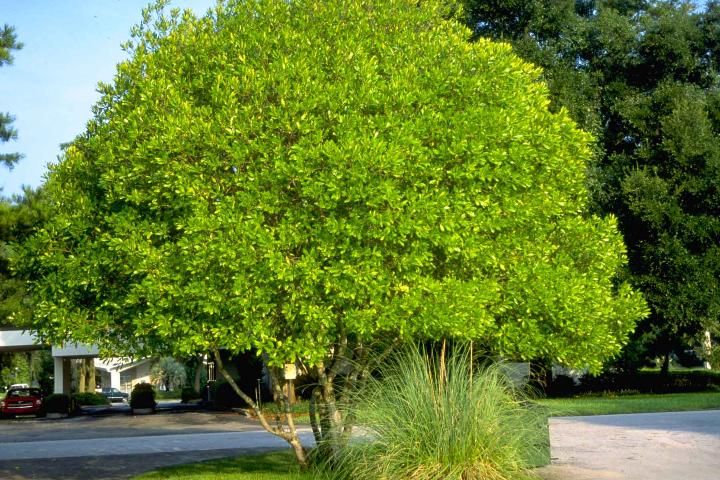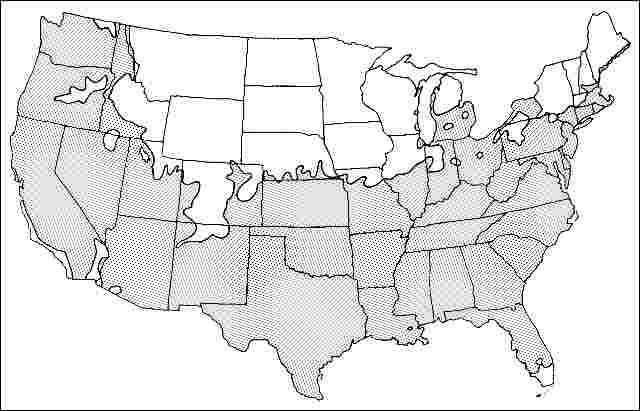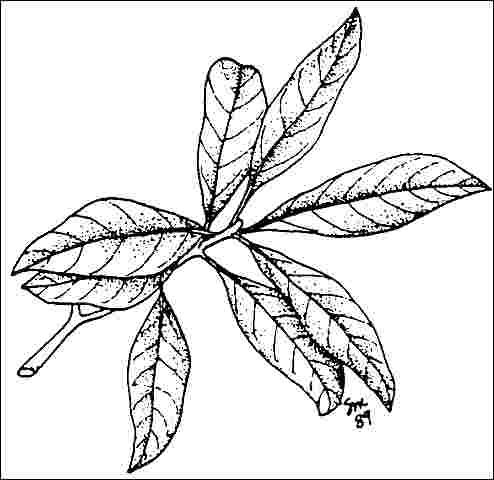Introduction
A native to the southeastern United States, Devilwood is a very attractive, small evergreen tree which is most commonly seen at 15 to 25 feet in height and sports lush, dark, olive green leaves throughout the year. It is occasionally seen 30 to 40 feet tall in its native habitat and grows slowly. The clusters of small, white, fragrant, early springtime flowers are followed by the production of small, dark blue drupes, ripening in fall and persisting on the tree until the following spring, if not first consumed by birds and other wildlife. Its ease of growth, pest-resistance, attractive foliage and flowers, and wildlife-attracting fruits would make Devilwood a popular choice for naturalizing or the mixed shrubbery border. The trees tolerate heavy pruning particularly well and may also be used as a hedge. Devilwood is so-named because the fine-textured wood is difficult to split and hard to work.

Credit: Ed Gilman
General Information
Scientific name: Osmanthus americanus
Pronunciation: oz-MANTH-us uh-mair-ih-KAY-nus
Common name(s): Devilwood, Wild-Olive
Family: Oleaceae
USDA hardiness zones: 5B through 9B (Figure 2)
Origin: native to North America
Invasive potential: little invasive potential
Uses: hedge; screen; reclamation; deck or patio; highway median; street without sidewalk; parking lot island < 100 sq ft; parking lot island 100-200 sq ft; parking lot island > 200 sq ft; tree lawn 3-4 feet wide; tree lawn 4-6 feet wide; tree lawn > 6 ft wide; specimen
Availability: Grown in small quantities by a small number of nurseries

Description
Height: 15 to 25 feet
Spread: 10 to 15 feet
Crown uniformity: symmetrical
Crown shape: vase, round
Crown density: dense
Growth rate: moderate
Texture: medium
Foliage
Leaf arrangement: opposite/subopposite (Figure 3)
Leaf type: simple
Leaf margin: entire
Leaf shape: lanceolate, ovate, elliptic (oval)
Leaf venation: pinnate
Leaf type and persistence: evergreen
Leaf blade length: 2 to 4 inches, 4 to 8 inches
Leaf color: green
Fall color: no color change
Fall characteristic: not showy

Flower
Flower color: white/cream/gray
Flower characteristics: showy
Fruit
Fruit shape: oval
Fruit length: .5 to 1 inch
Fruit covering: fleshy
Fruit color: blue
Fruit characteristics: attracts birds; not showy; fruit/leaves not a litter problem
Trunk and Branches
Trunk/bark/branches: branches droop; not showy; typically multi-trunked; thorns
Pruning requirement: little required
Breakage: resistant
Current year twig color: green, brown
Current year twig thickness: thick
Wood specific gravity: unknown
Culture
Light requirement: full sun, partial sun or partial shade
Soil tolerances: clay; sand; loam; acidic; extended flooding; well-drained
Drought tolerance: moderate
Aerosol salt tolerance: high
Other
Roots: not a problem
Winter interest: no
Outstanding tree: yes
Ozone sensitivity: unknown
Verticillium wilt susceptibility: unknown
Pest resistance: free of serious pests and diseases
Use and Management
Naturally found along streambanks or swamp margins, Devilwood should be grown in full sun or partial shade on moist, well-drained soil. Drought tolerance is moderate once established. The tree is probably as shade tolerant as any osmanthus. Not tested as an urban tree but may have some merit in wet soils.
Propagation is by cuttings or seed, and is difficult by either.
Pests and Diseases
No pests or diseases are of major concern.